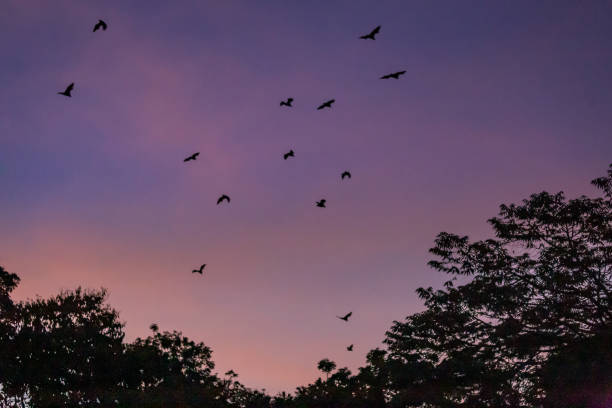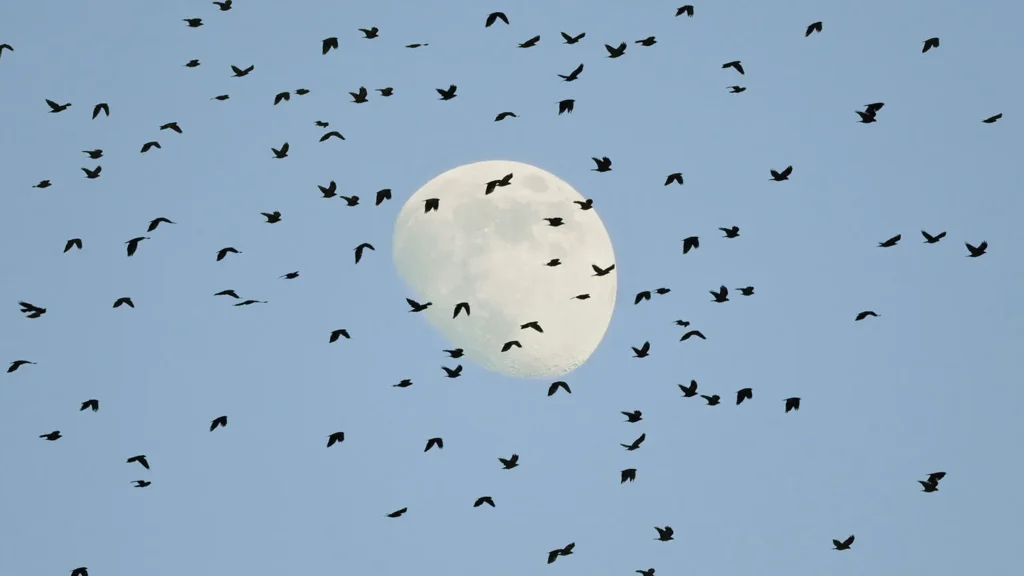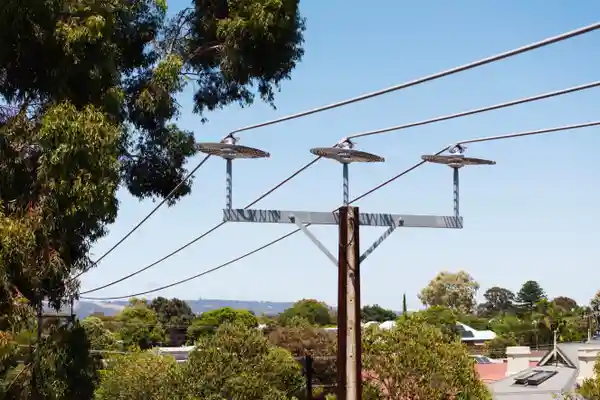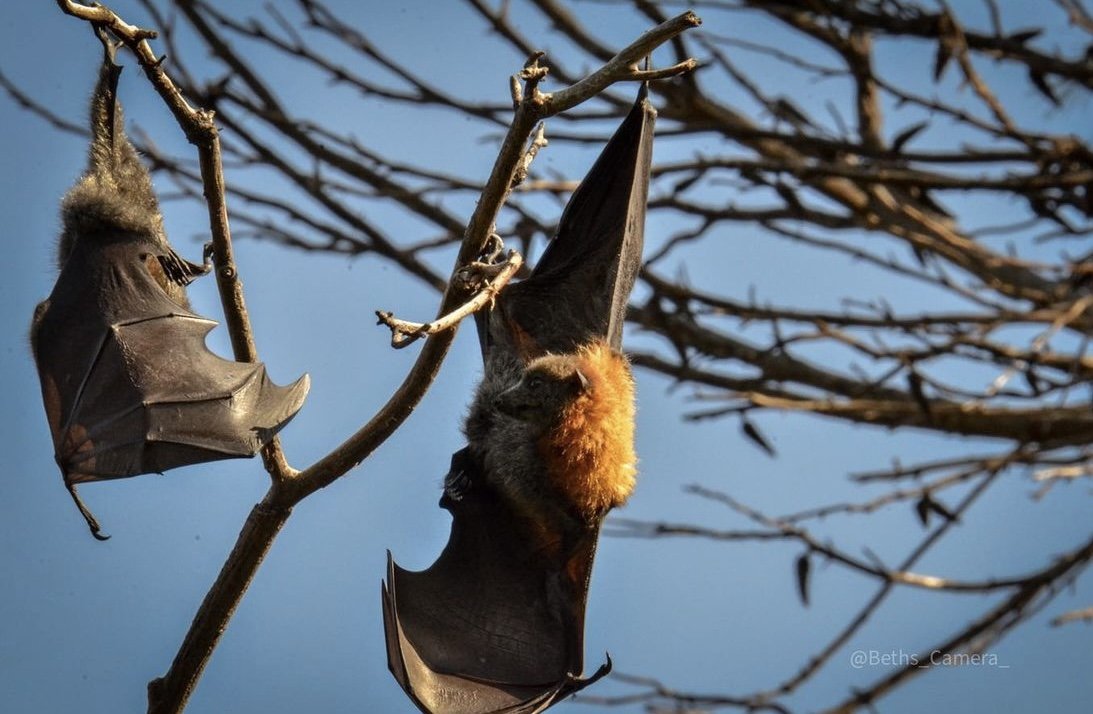In a spectacle of nature, grey-headed flying foxes, boasting wingspans exceeding a meter and a voracious craving for fruit and nectar, have made South Australia their sprawling sanctuary.
As twilight descends, a magnificent spectacle unfolds near the Adelaide zoo—a stand of pine trees erupts in a flurry of activity as tens of thousands of megabats take flight. With wings spanning a meter wide, the grey-headed flying foxes cast a mesmerizing silhouette against the darkening sky, akin to the emblem of a legendary superhero.
The arrival of flying foxes in Adelaide around 2010 marked a remarkable shift, propelled by climate-induced food shortages. Driven by drought and habitat loss in New South Wales and Victoria, these megabats journeyed southward, seeking refuge. Upon discovering hospitable conditions, they not only settled but thrived, establishing bustling colonies amidst the urban landscape.
Today, they converge in a single colossal colony within Botanic Park—home to approximately 46,000 of these remarkable creatures—before embarking on their nightly quest for sustenance, albeit causing some disruption along the way.
“For an urban encampment, those numbers are quite remarkable…it’s among the highest we’ve observed in South Australia,” remarks Jason van Weenen, the urban biodiversity team leader at Green Adelaide.
“The year 2010 marked the inaugural arrival of the colony, coinciding with significant challenges faced by the species across their eastern habitats.”
He continues, “Those adverse conditions prompted their migration towards Adelaide, where they’ve since adapted to incorporate it into their foraging routines.”

The grey-headed flying-fox (Pteropus poliocephalus), an iconic inhabitant of Australia, stands as one of the world’s largest bats. Often dubbed fruit bats, these majestic creatures weigh in at around 700 grams and boast impressive visual acuity, eschewing the use of echolocation—a trait typically associated with smaller microbats, some weighing a mere three or four grams.
A burgeoning colony has taken root near the regional town of Millicent, hinting at the possibility of future settlements. However, the relentless onslaught of high temperatures, particularly hovering around 38°C, poses a dire threat to these megabats, especially the delicate pups—a pressing concern exacerbated in recent years.
In Adelaide, innovative solutions to combat heat stress have emerged, including the strategic placement of sprinklers lifted to tree level to offer respite. Meanwhile, the sight of flying-foxes indulging in a refreshing drink or even leisurely swimming in rivers has become a familiar occurrence.
Thankfully, the current season’s mild summer coupled with abundant resources has ushered in a boon for the colony, with successful breeding and a conspicuous absence of significant heat stress events—a rare and welcome reprieve.

During the day, they cluster in trees, resembling rustling garbage bags with their fluffy, fox-like heads peering out. But come nightfall, they embark on their quest for sustenance, seeking out the sweet nectar of eucalyptus trees and indulging in an array of fruits, from figs to apples and pears.
However, their nocturnal escapades can sometimes lead to unintended consequences. Exhausted young bats may seek respite along power lines, inadvertently triggering power outages.
According to Paul Roberts, head of corporate affairs at SA Power Networks, February and early March pose the greatest risk for bat-related outages, as the new brood takes flight.
“Customers may experience prolonged outages if a bat becomes entangled in power lines, or brief ‘momentary’ interruptions as equipment restores power following a bat-related incident,” he explains.
“Most of these incidents occur during the predawn hours, when young bats tire from foraging and seek reprieve atop electricity poles.”
In 2023, the year was marked by a flurry of momentary outages and 55 sustained interruptions, leaving a staggering 72,000 customers without power. Roberts acknowledges the likelihood of a similar scenario unfolding this year, albeit predominantly during the early morning hours.
To address the issue, SA Power Networks is actively pursuing remedies. Enter the innovative solution: animal guards resembling Frisbee-like plastic devices. These guards are strategically deployed in areas most susceptible to bat-related incidents. Yet, navigating the bats’ erratic flight paths presents a formidable challenge, thwarting systematic installation. As a result, crews seize opportunities to fit guards while attending to other tasks or during lulls in activity.

“We are committed to minimizing the impact, but with growing colonies and hundreds of thousands of poles, the task ahead is substantial. Over the next decade, we’ll prioritize installing animal guards and expanding coverage of our powerlines to significantly reduce the occurrence of bat-related outages,” states Roberts.
While bats can carry lyssavirus, human infection is rare. The Hendra virus they may carry poses a risk to horses, but vaccinations have mitigated this threat.
Van Weenen reflects on the steep learning curve, noting that while the population is protected, it presents challenges to infrastructure and industry.
“Each species has its own quirks, and the flying foxes are quite different from other species here in SA. If you get scratched or bitten, seek medical attention for a rabies shot,” he advises. “Since the colony is relatively new in SA, it’s important to remind people not to touch them—trained professionals are vaccinated and equipped to handle bats safely.”
In suburban backyards across metropolitan Adelaide, the air is filled with the raucous squabbles of grey-headed flying foxes as they vie for the choicest food. Their preferences range from river red gum and blue gum nectar to lemon-scented or spotted gums.
As the first light of dawn graces the horizon, the colony retreats to its urban sanctuary, where they spend another day perched in trees, their furry heads peeking out from beneath their rustling black wings.
